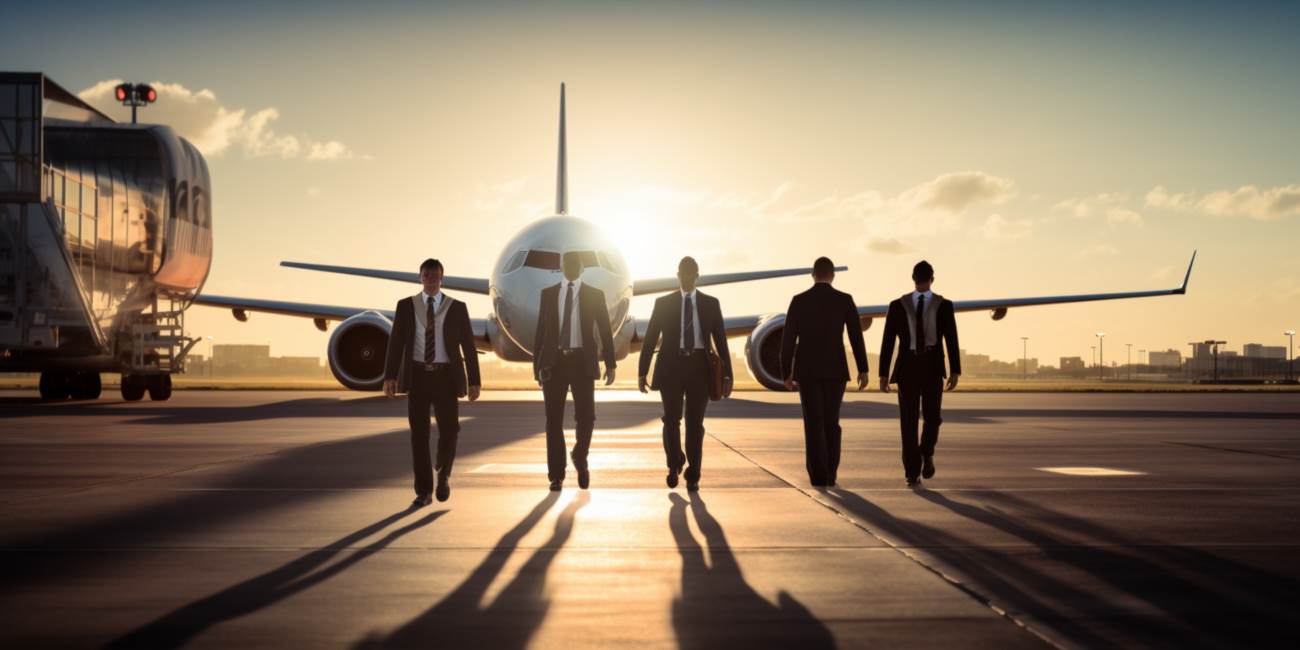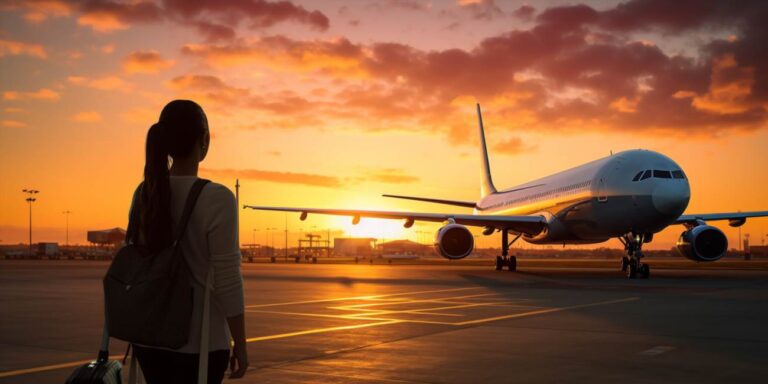Several factors play a pivotal role in determining the price tag of a commercial plane. Aircraft manufacturers, such as Boeing and Airbus, offer a range of models catering to diverse needs. The size, capacity, and technological features of a plane heavily influence its cost. A glance at the market reveals that smaller planes, designed for regional flights, come with a significantly lower price compared to their larger counterparts meant for international travel.
For instance, a narrow-body aircraft like the Boeing 737 or Airbus A320, ideal for shorter routes, may have a base price ranging from $80 million to $100 million. These planes typically accommodate a few hundred passengers and are the workhorses of many airlines worldwide. On the other hand, if an airline desires a long-haul, wide-body aircraft like the Boeing 777 or Airbus A350, equipped with advanced amenities and capable of carrying more passengers, the cost can escalate significantly, reaching upwards of $300 million.
It’s essential to note that the sticker price is just the tip of the iceberg. Airlines often opt for customization, adding specific features and configurations to meet their unique operational requirements. These modifications can substantially increase the overall cost of the aircraft. Moreover, the aviation industry has witnessed a surge in demand for fuel-efficient and environmentally friendly planes, leading to the development of models with advanced technologies, but also higher price points.
Another aspect impacting the cost is the market dynamics. Airlines might negotiate bulk deals or take advantage of manufacturer discounts, which can result in a lower commercial plane cost. Additionally, the availability of used planes in the market provides an alternative for cost-conscious airlines looking to expand their fleet without breaking the bank.
Let’s break down the estimated costs further by looking at a table that outlines the base prices of some popular commercial planes:
| Aircraft Model | Base Price Range |
|---|---|
| Boeing 737 | $80 million to $100 million |
| Airbus A320 | $80 million to $100 million |
| Boeing 777 | Exceeds $300 million |
| Airbus A350 | Exceeds $300 million |
Aspiring to own a commercial plane is undoubtedly a colossal financial commitment. Whether it’s the sleek efficiency of a narrow-body or the grandeur of a wide-body, airlines must carefully consider their needs and financial capabilities before embarking on the journey of acquiring these soaring giants.
Commercial aircraft purchase funding options and costs
Commercial aircraft purchase funding options and costs play a pivotal role in the aviation industry, influencing airlines’ decisions and shaping their financial strategies. When considering acquiring a new aircraft, carriers must navigate through a plethora of financing alternatives, each with its own set of advantages and challenges.
One key avenue for funding is aircraft leasing. Airlines often opt for operating leases, providing flexibility without the long-term commitment associated with ownership. Financial leases, on the other hand, offer a structured path to ownership but may tie up substantial capital. Leasing arrangements can include dry leases, where the lessee provides the crew and maintenance, or wet leases, which encompass a comprehensive package with crew, maintenance, and insurance.
Another crucial consideration is debt financing. Airlines may secure loans to fund their aircraft acquisitions, leveraging their creditworthiness. This option offers the advantage of ownership from the outset, but interest rates and repayment terms are critical factors influencing the overall cost. Airlines often engage in meticulous negotiations with financial institutions to secure favorable terms.
Equity financing emerges as a strategic alternative, involving the sale of shares to raise capital. This approach allows airlines to avoid accumulating debt but dilutes ownership. Investors, attracted by the aviation industry’s growth potential, may find equity in airlines an appealing investment opportunity. However, the volatile nature of the aviation sector can impact shareholder returns.
Understanding the total cost of ownership (TCO) is imperative when evaluating funding options. TCO encompasses not only the purchase price but also operational costs, maintenance expenses, and depreciation. Airlines meticulously calculate TCO to gauge the long-term financial implications of their decisions, ensuring sustainability and profitability.
Market conditions significantly influence funding choices. In times of economic uncertainty, airlines may face challenges securing favorable financing terms. Conversely, periods of industry prosperity may open up opportunities for more favorable deals. The ability to navigate these fluctuating conditions requires a nuanced approach and strategic financial planning.
As airlines traverse the complex landscape of aircraft purchase funding, a comprehensive understanding of tax implications is crucial. Tax benefits, depreciation allowances, and jurisdiction-specific regulations all factor into the financial calculus. Airlines often collaborate with financial and tax experts to optimize their funding structures and minimize tax burdens.
Global economic trends, geopolitical factors, and advancements in aviation technology further contribute to the evolving landscape of aircraft purchase funding. The interplay of these elements requires airlines to remain agile, adapting their strategies to capitalize on opportunities and mitigate risks.
Commercial airplane cost factors like size, technology and range

Commercial airplane manufacturing involves a complex interplay of various factors that significantly impact the size, technology, and range of the aircraft. These elements are pivotal in determining the overall cost and performance of the airplanes that dominate our skies.
One of the primary factors influencing the cost of a commercial airplane is its size. The dimensions of an aircraft play a crucial role in dictating the manufacturing complexities, material requirements, and overall operational expenses. Larger planes require more raw materials, advanced engineering solutions, and sophisticated manufacturing processes, inevitably escalating the overall cost. Conversely, smaller planes might be more cost-effective but sacrifice passenger capacity and cargo capabilities.
When delving into the intricacies of airplane manufacturing, the significance of technology becomes apparent. Technological advancements continuously shape the landscape of aviation, influencing both the design and functionality of commercial planes. Cutting-edge technologies not only enhance safety features but also contribute to fuel efficiency and overall performance. The integration of state-of-the-art avionics, composite materials, and innovative propulsion systems adds a layer of sophistication to airplanes, albeit at an augmented cost. Balancing technological innovation with economic considerations is a delicate dance for aircraft manufacturers.
The range of a commercial airplane, referring to the maximum distance it can travel without refueling, is a critical parameter affecting its cost. Airlines often require planes with diverse ranges to accommodate various flight routes and preferences. Long-haul flights demand aircraft with extended ranges, necessitating larger fuel capacities and more robust engineering. On the other hand, regional flights might prioritize fuel efficiency over range. As a result, the cost of airplanes is intricately tied to their ability to cover different distances efficiently.
Examining these factors in a holistic manner, it becomes evident that the size, technology, and range of commercial airplanes are interconnected dimensions that shape the aviation industry. The delicate balance between these elements determines the cost-effectiveness, performance, and versatility of the aircraft that traverse our skies, creating a dynamic landscape where innovation and pragmatism collide.
Comparing new and used commercial airplanes for airline operations
When it comes to the dynamic realm of airline operations, the choice between new and used commercial airplanes is a crucial decision that can significantly impact an airline’s efficiency, costs, and overall performance.
New aircraft, straight from the manufacturer, often boast cutting-edge technology, fuel efficiency, and compliance with the latest safety standards. The allure of a new plane lies in the promise of state-of-the-art avionics, advanced materials, and improved aerodynamics that contribute to reduced fuel consumption and environmental impact.
On the flip side, opting for used airplanes offers a different set of advantages. Cost-effectiveness is a primary consideration, as used aircraft typically come with a lower upfront price tag. Airlines looking to expand their fleet or replace aging planes may find used options appealing, allowing them to allocate resources strategically.
New airplanes, while technologically advanced, may pose challenges in terms of initial investment. The financial commitment to acquiring new aircraft can be substantial, and airlines need to carefully assess whether the long-term benefits justify the higher upfront costs.
When considering the operational aspects, the age of the aircraft becomes a crucial factor. Used planes may require more frequent maintenance and could have a shorter remaining service life compared to their new counterparts. However, with proper maintenance and refurbishment, used planes can still deliver reliable performance, making them a viable option for airlines with budget constraints.
One way to visualize the comparison between new and used airplanes is through a comprehensive table, outlining key features, costs, and considerations. This table can serve as a quick reference guide for airlines in the decision-making process:
| Aspect | New Airplanes | Used Airplanes |
| Technology | Cutting-edge | Varies based on age |
| Upfront Cost | Higher | Lower |
| Maintenance | Minimal initially | Potentially higher |
| Environmental Impact | Reduced | Varies based on age and modifications |
Ultimately, the decision to choose between new and used airplanes depends on the airline’s specific needs, budget constraints, and long-term strategic goals. Both options offer unique advantages, and a thoughtful evaluation of these factors is paramount in ensuring a fleet that aligns with the airline’s vision and operational requirements.
See also:
- How much is a boeing 767 and four other titles of cockpit dreams
- The cost of a small plane: what are the expenses and details to consider before buying
- Military aircraft operating costs and flight duration
- The incredible costs behind owning and operating a new boeing 747
- How much do aircraft brokers make yearly income selling airplanes






